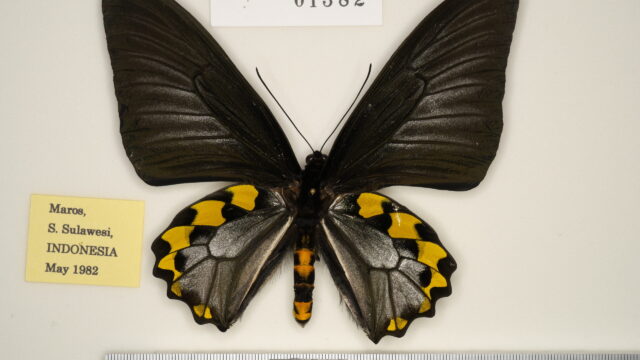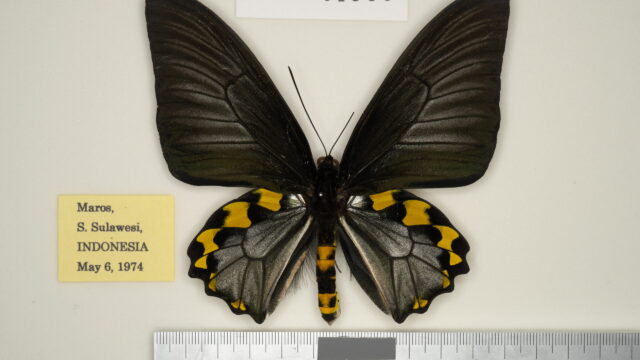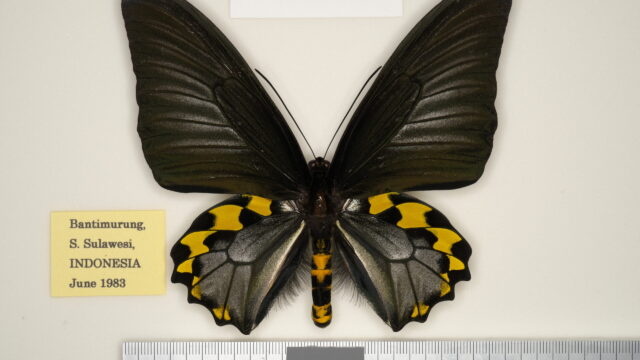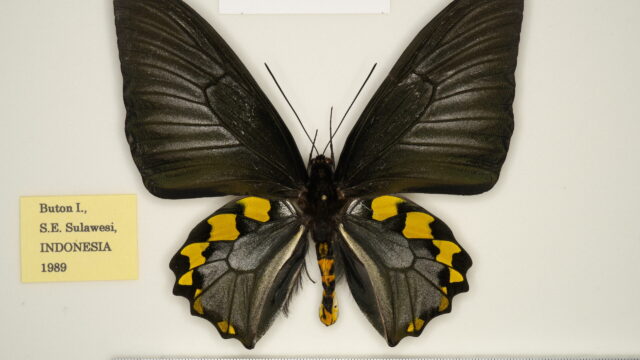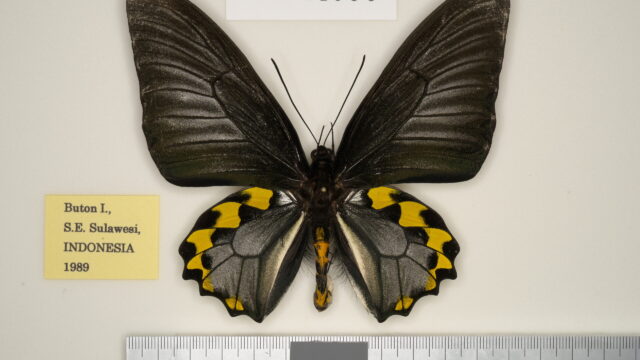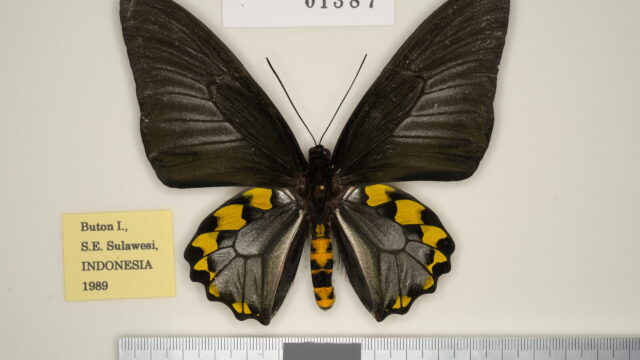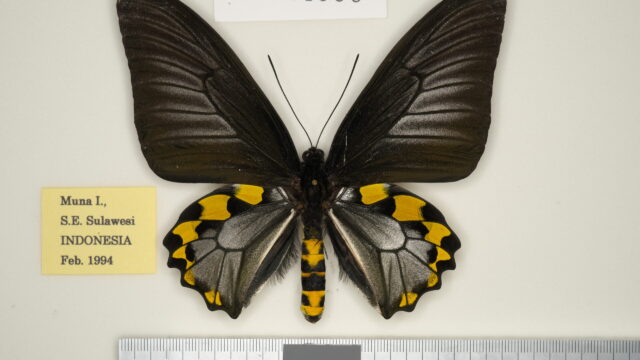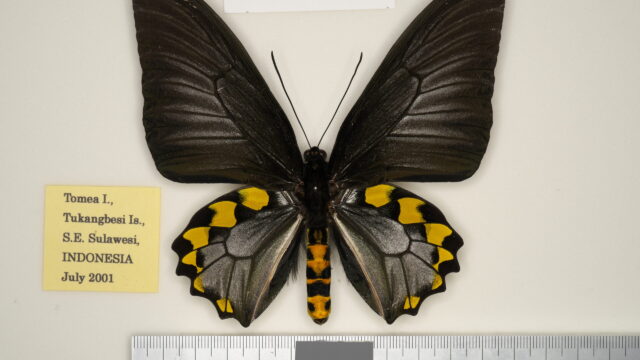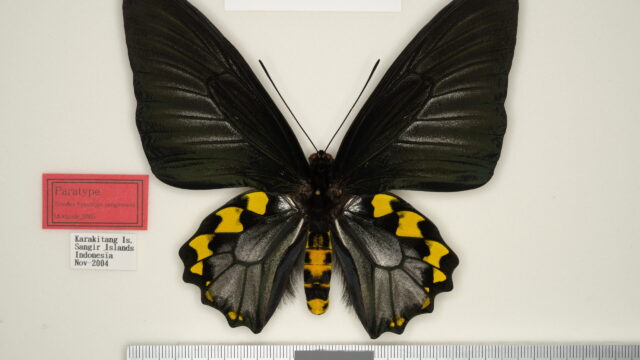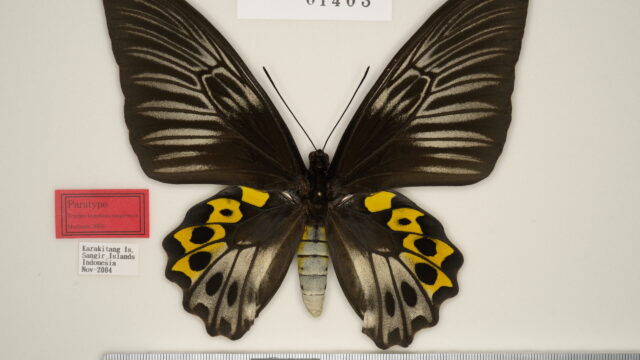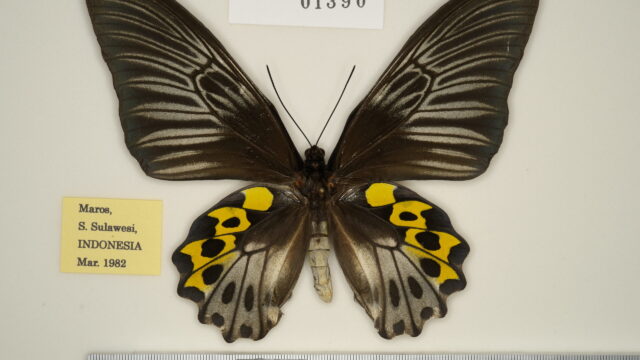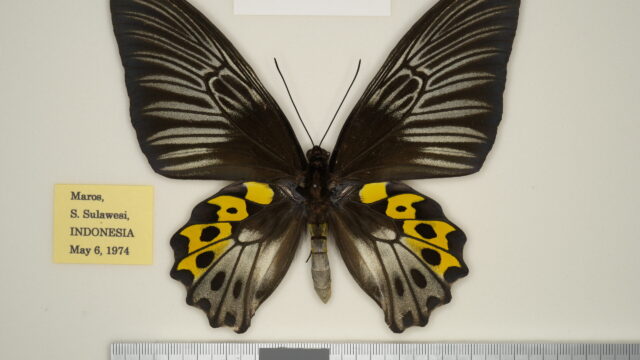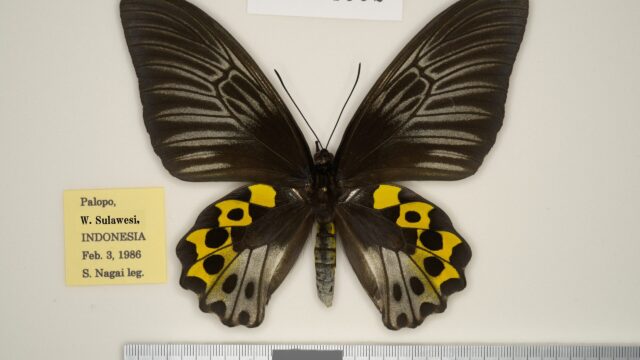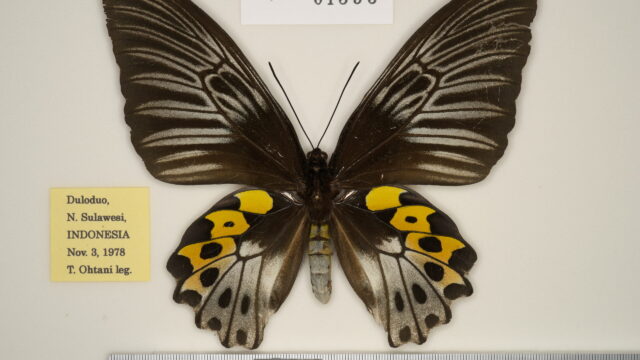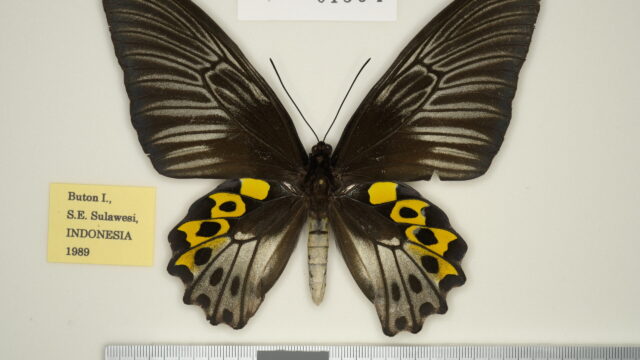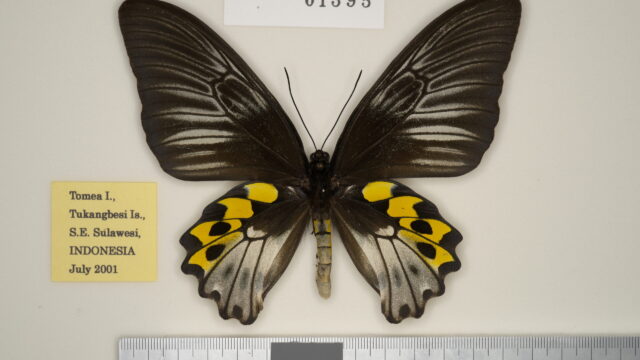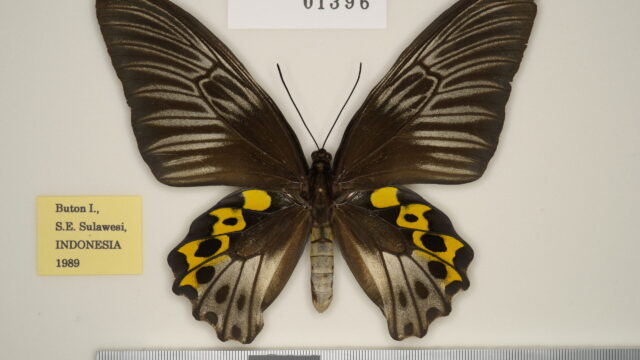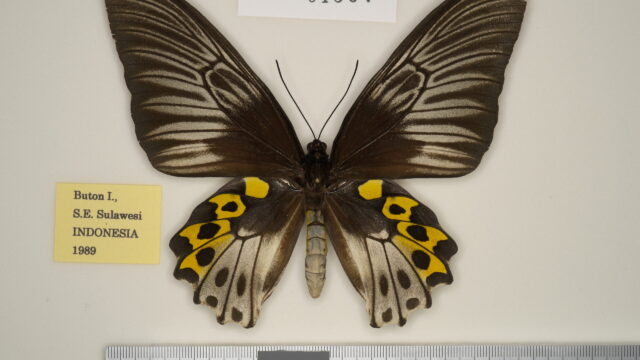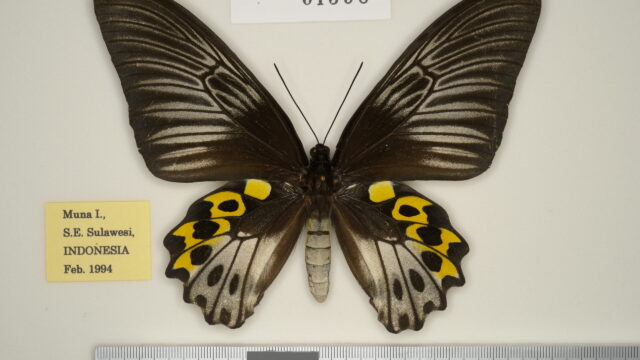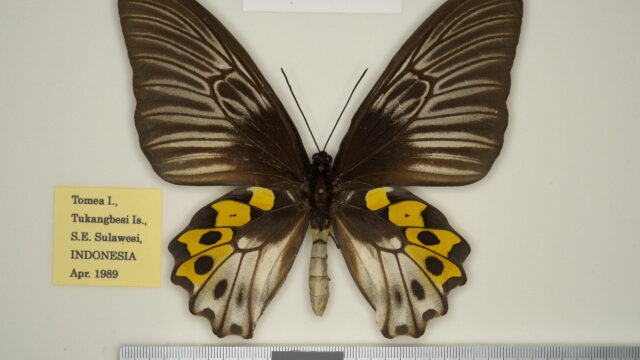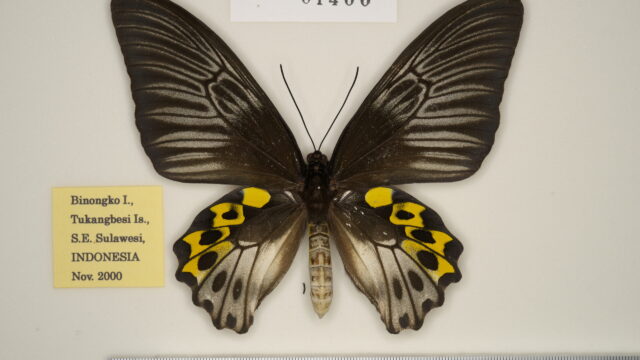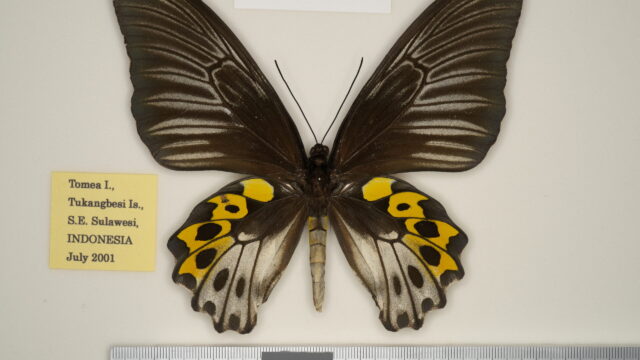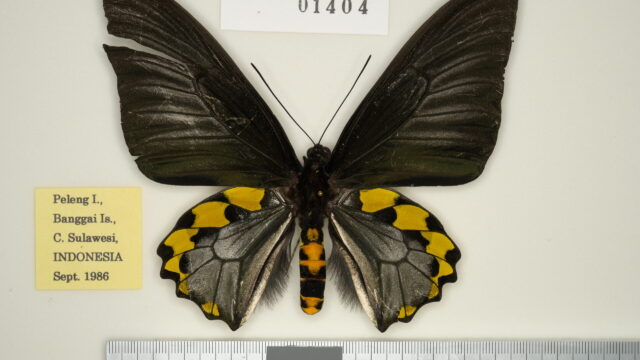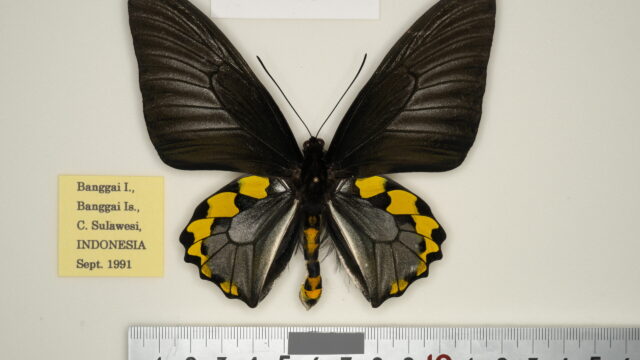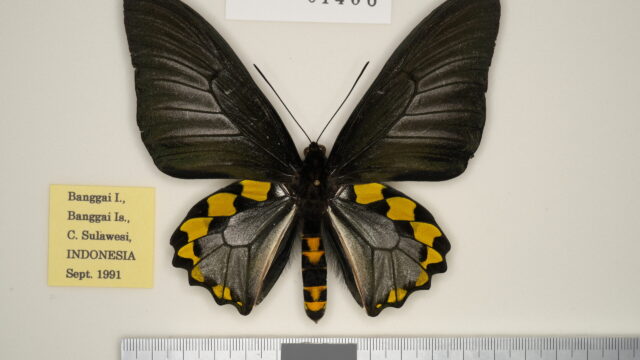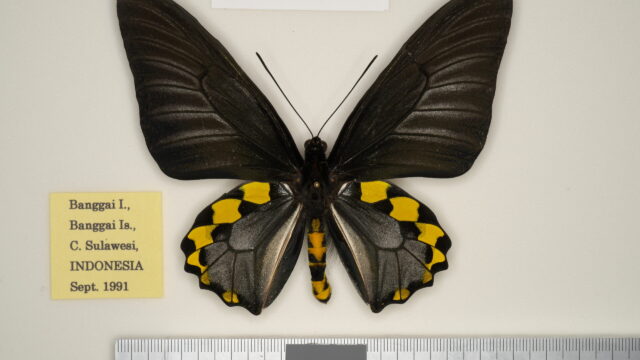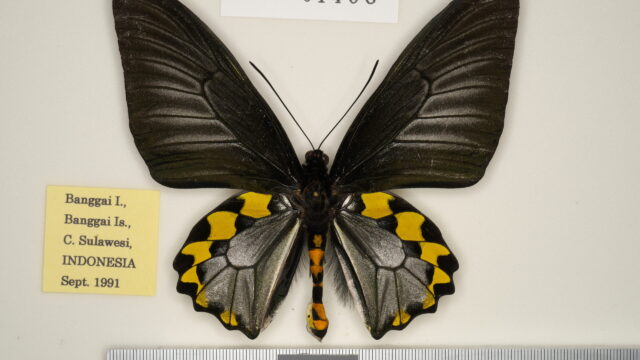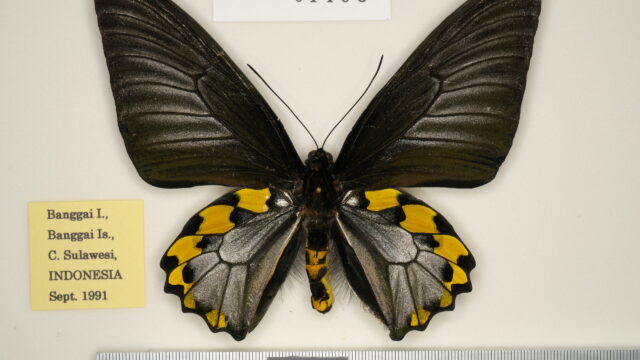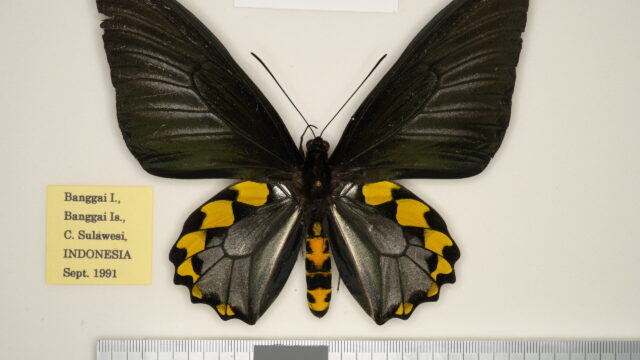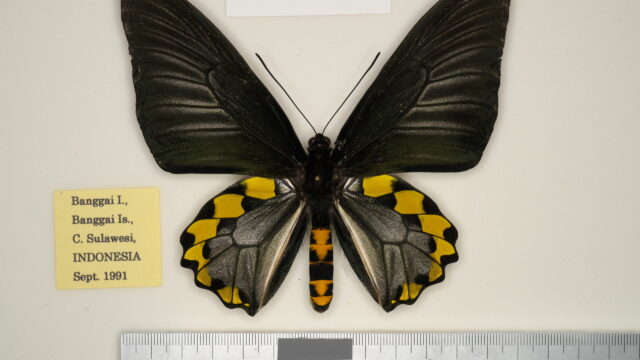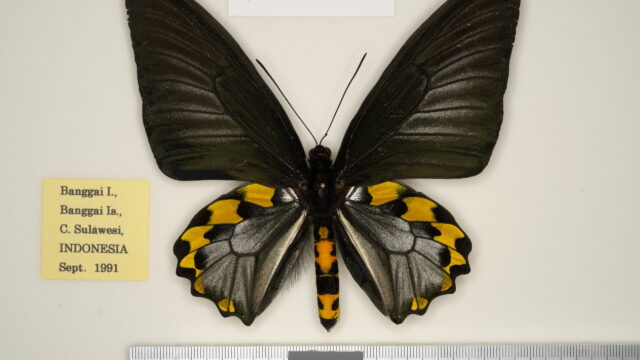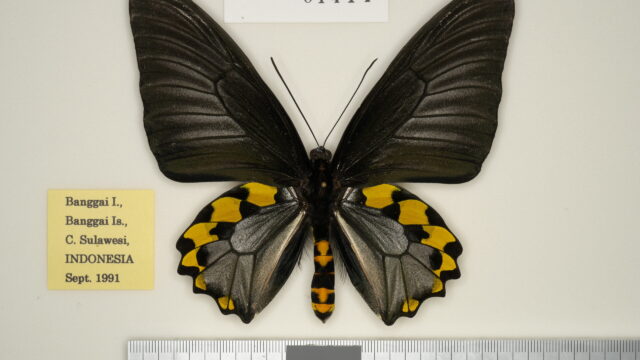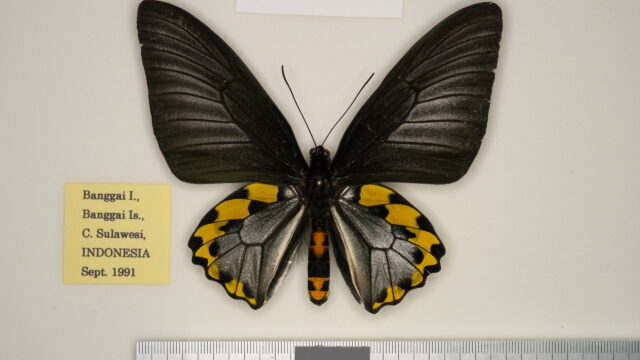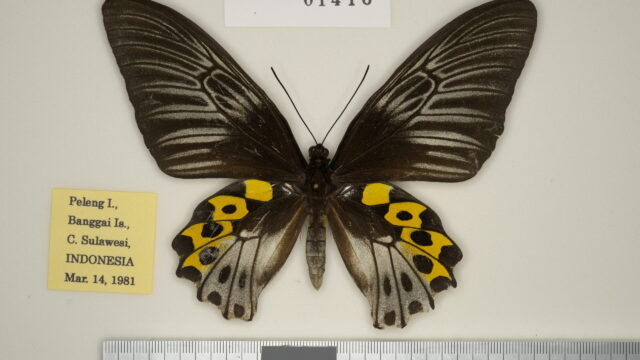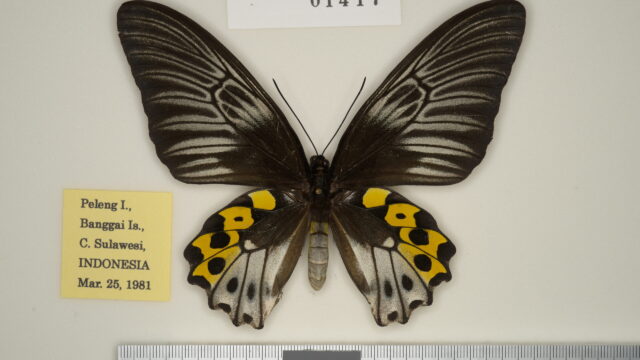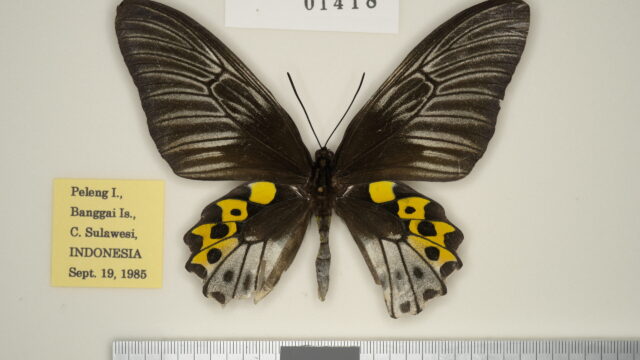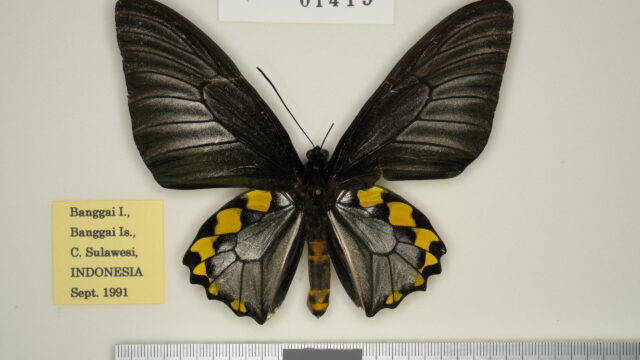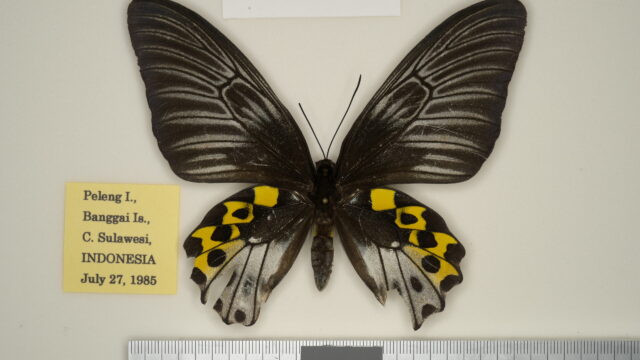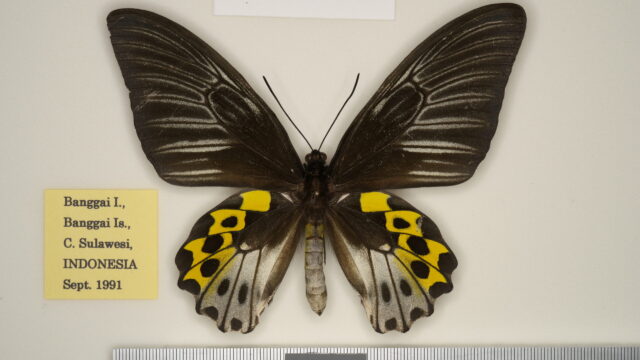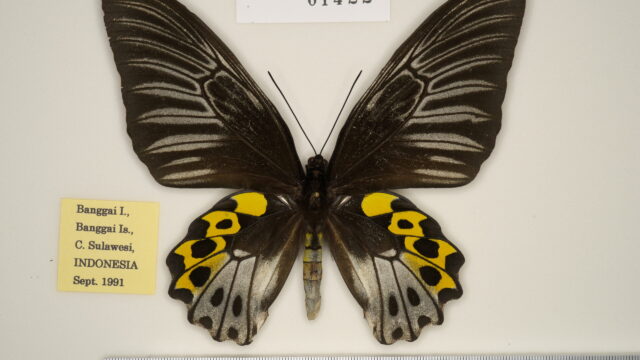- Ssp. cellularis Rothschild, 189511) [♂, ♀]
= remus, (Felder, 1864)3) (nec Fabricius, 1777) [♂, ♀] (Sulawesi, Seram, Ternate)
= celebensis, (Staudinger, 1895)13) (nec Wallace, 1865)14) [♂, ♀] (Sulawesi)
= caelicola (Haugum & Low, 1982)5) [♂] (Banggai Islands)
(Distribution) [Map 71]
INDONESIA [N. Sulawesi] Talaud Islands (Salibabu Is.), Sulawesi Is.: Manado (Kali River basin), Mt. Lokon (Tambulinas), Kotamobagu, Doloduo, [C. Sulawesi] Tolitoli, Palu, Palolo), Togian Islands (Togian Is.), Banggai Islands (Peleng Is., Bangkulu Is., Banggai Is.), [W. Sulawesi] (Wotu, Palopo, [S. Sulawesi] Bulu Dua, Maros, Bantimurung, Bantaeng, Selayar (=Kabia) Is., [S. E. Sulawesi] Unaaha, Kabaena Is., Muna Is., Buton (=Butung) Is., Tukangbesi Islands (Wangiwangi Is., Tomea Is., Binongko Is.) Batuata Is.
(Episodes of discovery and original description)
cellularis The first description of the subspecies from Celebes (Sulawesi) and Ternate was by C. & R. Felder (1864). They included the species from Seram and Ambon Islands as Remus and considered them to be the same subspecies. Many subsequent authors also considered it one species and one subspecies, but Staudinger (1895) named it a separate subspecies, Celebensis, because “the species from Celebes has a grayish-white spot at the tip of the cell of the hind wing of the ♀ and the yellow color of the discal spaces remains in the fourth space and does not extend toward the inner edge”. However, since Celebensis had already been named by Wallace (1865) for the local form of Celebes in Orn. helena (now a separate species, Tr. oblongomaculatus), Rothschild described it as cellularis in the same year. The original specimens were 1♂, 5♀♀ from Celebes and 1♂, 1♀ from the Talaud Islands. The name “cellularis” probably means “with small spots in the hind wing cell.
caelicola One ♂ collected on 7 November 1937 at Noelion Peling, Banggai Island, is preserved in the National Museum of Natural History in Leiden as subspecies cellularis. Since the specimen differed somewhat from other subspecies, Haugum and Low (1982) described it as a new subspecies. The subspecies name caelicola is Latin for “god.
(Characteristics)
A somewhat rather large and most familiar subspecies distributed on Sulawesi Island and neighboring islands.
(Spotted pattern)
♂: Difficult to distinguish from the nominotypical subspecies but can be identified by the absence of a white stripe on apex of subcostal space of HW underside.
♀: FW do not differ from those of the nominotypical ssp., but in HW, identification is easy because that a grayish white cell-spot is present; the yellow area may be limited in extent of subcostal space to space 4; spots of space 3 to space 1b are grayish white, reaching the cell and the upper surface of abdomen is gray with little yellow.
f. loc. sangirensis Morisode, 20059) [♂, ♀]
(Distribution) [Map 71]
INDONESIA: Sangihe Islands (Kerakitang Is.)
(Episodes of discovery and original description)
It was described as a subspecies of T. hypolitus by Morisode based on 17 pairs of specimens collected in October 2004 on Karakitang Island in the Sangir Islands. This subspecies is named after its habitat.
(Characteristics)
This local form closely resembles ssp. cellularis but differs slightly in the following points.
(Spotted pattern)
♂: On the underside of HW, the black spot in contact with the inner side of yellow spot in space 4 are large, moreover the black scales along the wing veins are dense and present on the false vein at the base in the cell.
♀: On the underside of HW, the black scales along the wing veins are more broadly margined and the black discal spots are larger.

